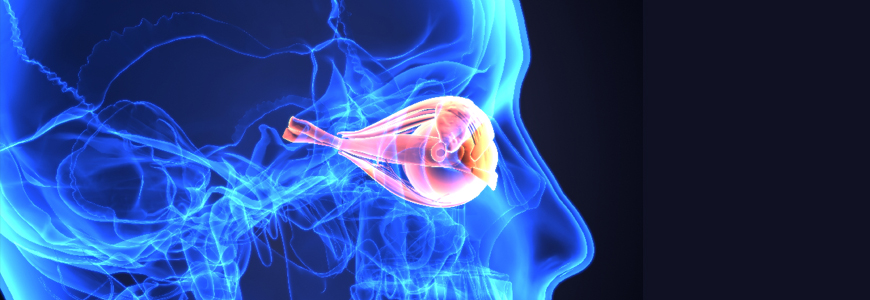Technology has made it possible for patients to self-monitor their intraocular pressure (IOP), but there are challenges to overcome before it becomes widely applicable. Because IOP fluctuates significantly, obtaining multiple measurements outside the clinic setting can reduce the number of office visits and facilitate immediate changes in medications for patients when indicated.
But home tonometry devices produce large amounts of data for each patient that can be challenging to collect and analyze for follow-up, and most tonometers aren’t suited for home use because they require anesthetizing the cornea.
In this Q&A, Duke glaucoma specialist Leon W. Herndon Jr., MD, and pediatric glaucoma specialist Sharon F. Freedman, MD, share their experiences and thoughts on home tonometry.
Q: What has Duke’s experience been with home tonometry for glaucoma care?
Freedman: Most IOP-measuring methods, including non-contact or air puff tonometry, require the cornea to be anesthetized. The gold standard has always been the Goldmann applanation tonometer (Haag-Streit UK, Essex, England), but there has long been interest in other ways to check IOP. Rebound tonometers don’t require an anesthetic eye drop, and can be used on babies and young children in the office, so we decided to see whether parents could use a rebound device on their children’s eyes at home. As part of a clinical study, we began loaning Icare tonometry devices (Icare, Helsinki, Finland) to families. We found that having families measure a child’s IOP at home often revealed fluctuations that were not “caught” during office visits. Being able to evaluate IOPs taken at home over extended hours provided additional data that sometimes changed our decisions about glaucoma medications and management.
Herndon: The Icare devices have been around for awhile, and several of my adult patients have purchased them. We’re considering setting up a program where we can rent tonometers to patients. Dr. Freedman has already done this to some degree in the pediatric population, but we've been talking about scaling this up to our adult population.
Q: Why has home tonometry been slow to be studied for adults?
Freedman: The adult glaucoma world hasn’t jumped on this technology because clinicians would be overwhelmed with data, and there’s no good study that correlates home IOP readings with actual glaucoma outcomes. The reason I think home tonometry has perhaps made more progress in the pediatric glaucoma area is that it's a rarer disease in children than in older adults. I have no question that in selected pediatric patients it makes a huge difference in terms of allowing the physician to tailor and improve clinical management. I think that in selected adult patients the same will be true, but there is some groundwork to be done to make it more widely applicable.
Herndon: I think that cost is a factor. Many of my patients don’t see the added value of making an expensive purchase such as a home tonometer when they feel the every three to four months that they go into the office to be checked is adequate. Although the ICare tonometer has been shown to be reliable in several studies (some done here at Duke), many clinicians feel that too much data might actually be detrimental to their management of the glaucoma patient, especially if that patient is also able to track his/her IOP.
Q: How is home tonometry beneficial before or after glaucoma surgery?
Freedman: It’s invaluable in childhood glaucoma management in a couple of scenarios: 1) when we suspect ongoing optic nerve and vision damage is occurring, but we are just not getting the high IOP readings in the office to justify doing surgery; 2) the second and perhaps the most helpful is to help us decide how to manage an eye with glaucoma just after surgery, when the IOP may fluctuate widely and we would like to be able to adapt the medication schedules accordingly without making the patient return over and over to the office at short time intervals.
Herndon: It's important after tube shunt surgeries to be able to monitor a patient’s pressures. Because the tube typically doesn’t start working fully until four to six weeks after surgery, it’s important to know when the pressure drops. When that happens, we need to monitor and change the patient’s medications.
Q: What do you think the future holds for home tonometry?
Freedman: Home tonometry allows us not only to capture IOP data that helps us make decisions, but also to tailor the treatment based on this supplemental data. The possibilities are almost endless as to how it could enhance care and decrease in-person office visits. Home tonometry doesn’t take the place of in-person exams once in a while, but at the same time, for kids, it’s made all the difference. You could very quickly apply this in adult practices to those patients who live far away from their physician’s office, those expected to have large IOP fluctuation, and those who are borderline for needing surgery based solely upon clinic-acquired data. I do believe it's going to be a short time before data from home IOP measurements is easily viewed, analyzed, and even downloadable into an EHR. That's when I think it will finally become easier and more practical to use home tonometry for clinical glaucoma management.
Herndon: Telehealth is hard to do in a glaucoma practice because we really need to know the IOP. The only thing you can really do in telehealth at this point is to try to increase medication compliance and check in with your patients. But as far as useful data, we're lacking because IOP fluctuates so much. Now more than ever, thinking about new treatment algorithms is important, as COVID-19 will likely be with us for a long time. It’s good that we’re finding new ways to monitor patients more closely such as home tonometry.
